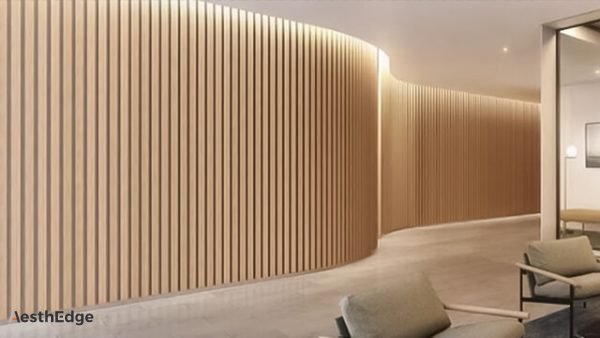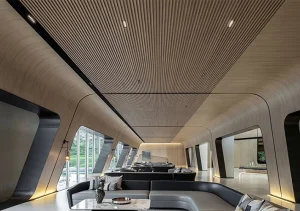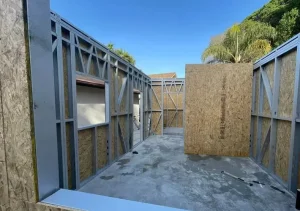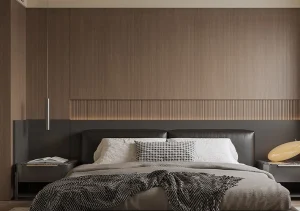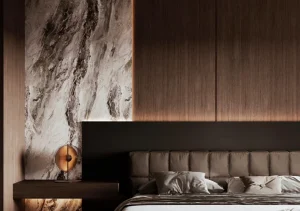Table of Contents
ToggleIntroduction
In today’s world, interior spaces are no longer designed solely for aesthetic appeal—they are expected to provide comfort, functionality, and acoustic performance. Whether in offices, hotels, restaurants, schools, or residential buildings, controlling sound is an essential part of creating a pleasant environment. This is where wood acoustic wall panels have emerged as a preferred solution.
Combining natural wood texture, acoustic efficiency, and modern design, wood acoustic panels offer both beauty and performance. For architects, interior designers, and builders, they represent a perfect balance between form and function. In this article, we’ll explore in detail why wood acoustic wall panels are the ideal choice for interior soundproofing, their working principles, advantages, material composition, installation methods, and suitable applications across industries.
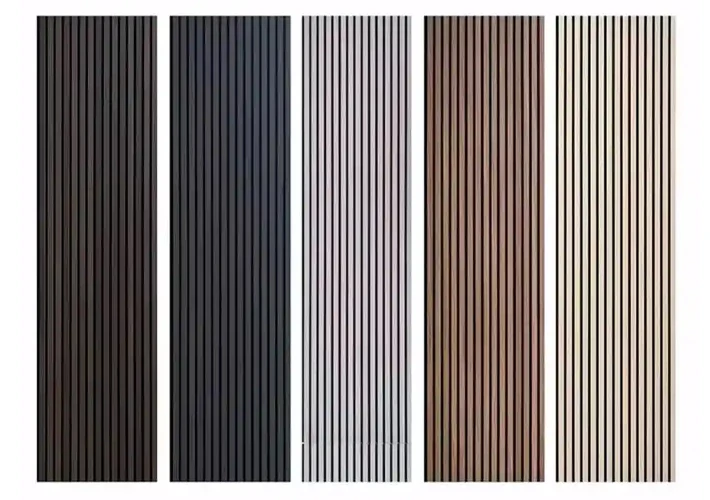
Understanding the Importance of Interior Soundproofing
Before exploring wood acoustic wall panels, it’s crucial to understand why soundproofing has become a fundamental requirement in modern architecture.
1.1 The Rise of Acoustic Comfort
In open-plan offices, classrooms, restaurants, and residential spaces, poor sound control can lead to distractions, stress, and discomfort. Excessive noise affects productivity, communication, and even health. Proper acoustic design helps:
- Reduce unwanted echo and reverberation
- Improve speech clarity
- Enhance privacy
- Increase overall comfort and well-being
1.2 Soundproofing vs. Sound Absorption
While often used interchangeably, soundproofing and sound absorption serve different purposes:
- Soundproofing prevents noise from passing through walls or ceilings.
- Sound absorption reduces reflections and echoes within a room.
Wood acoustic wall panels primarily work as sound absorbers, but when combined with insulation layers and substructures, they also contribute to soundproofing performance.
What Are Wood Acoustic Wall Panels?
2.1 Definition
Wood acoustic wall panels are decorative sound-absorbing panels made from materials such as MDF (Medium Density Fiberboard), bamboo charcoal wood, or solid wood veneer. They feature precision-engineered grooves or slats on the surface and acoustic felt backing to enhance sound absorption.
2.2 Composition
A typical wood acoustic panel includes:
- Front layer: Natural wood veneer or laminate surface for aesthetic appearance.
- Core material: MDF or bamboo fiberboard providing rigidity and resonance control.
- Back layer: Black polyester acoustic felt that absorbs sound waves effectively.
2.3 Acoustic Principle
Sound waves hitting the panel surface are partially absorbed and partially diffused. The groove design traps the sound, and the felt layer dissipates the energy, converting it into heat. This reduces reverberation time and enhances sound clarity.
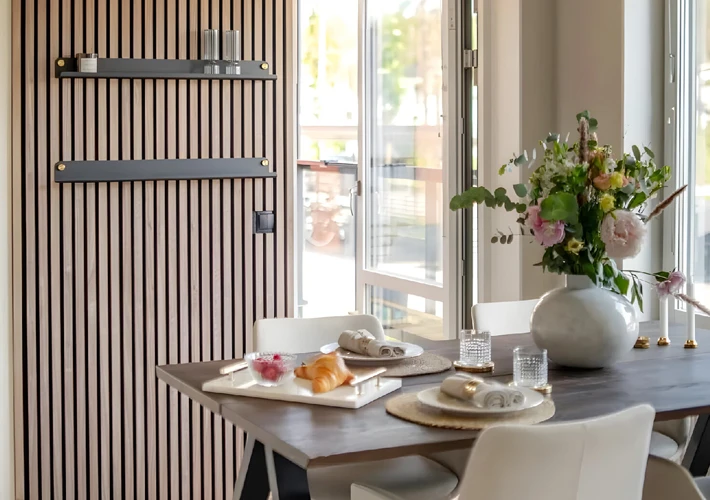
Why Choose Wood Acoustic Wall Panels for Soundproofing?
3.1 Superior Acoustic Performance
Wood acoustic panels are designed using Helmholtz resonance and micro-perforation principles. The grooves or perforations allow sound waves to enter the panel cavities, reducing echo and controlling low to mid-frequency sounds.
Typical Sound Absorption Coefficient (NRC) values range from 0.75 to 0.95, depending on thickness and installation structure—significantly higher than standard wall finishes.
3.2 Aesthetic Versatility
Unlike traditional soundproofing materials such as foam or fiberglass, wood acoustic panels combine acoustic efficiency with aesthetic sophistication. The natural grain and color of wood add warmth and elegance to any space, making them suitable for:
- Luxury hotels
- Corporate offices
- Conference rooms
- Theaters and auditoriums
- Residential interiors
3.3 Sustainable and Eco-Friendly
Many manufacturers now use FSC-certified wood, recycled materials, or bamboo-based fiberboards, making wood acoustic panels an environmentally friendly option. Panels are also low in formaldehyde emissions (E0 or E1 grade) and fully recyclable, aligning with global green building standards like LEED and BREEAM.
3.4 Durability and Longevity
Wood acoustic panels offer excellent durability, resisting warping, cracking, or fading. The surface is often coated with UV-resistant, water-based paints or melamine finishes, ensuring long-lasting appearance even in high-traffic areas.
3.5 Easy Installation and Maintenance
These panels come in modular interlocking designs that can be quickly installed on walls or ceilings using clips, battens, or direct mounting systems. Maintenance is minimal—usually requiring only light dusting or wiping with a soft cloth.
3.6 Customization Options
Wood acoustic panels can be customized in:
- Size and thickness (commonly 2400mm × 600mm × 21mm)
- Surface finishes (oak, walnut, maple, teak, black ash, etc.)
- Groove spacing (14/2, 28/4, 13/3 mm patterns)
- Color and texture to match interior design themes.
This flexibility makes them ideal for architects seeking bespoke acoustic solutions.
Technical Advantages of Wood Acoustic Wall Panels
4.1 High NRC Rating
Wood acoustic panels have Noise Reduction Coefficients (NRC) up to 0.95, meaning they can absorb 95% of incident sound. This outperforms many fabric or foam-based systems.
4.2 Fire and Moisture Resistance
Many products are treated with fire-retardant coatings (B1 or B2 class) and moisture-resistant finishes, making them suitable for public and commercial use where safety standards are strict.
4.3 Thermal Insulation
The dense wood core and air cavities behind the panels provide additional thermal insulation, reducing heat transfer and contributing to energy savings.
4.4 Impact Resistance
Unlike fabric or foam materials that easily deform, wood acoustic panels maintain their structure even in areas with frequent contact—such as hallways or school corridors.
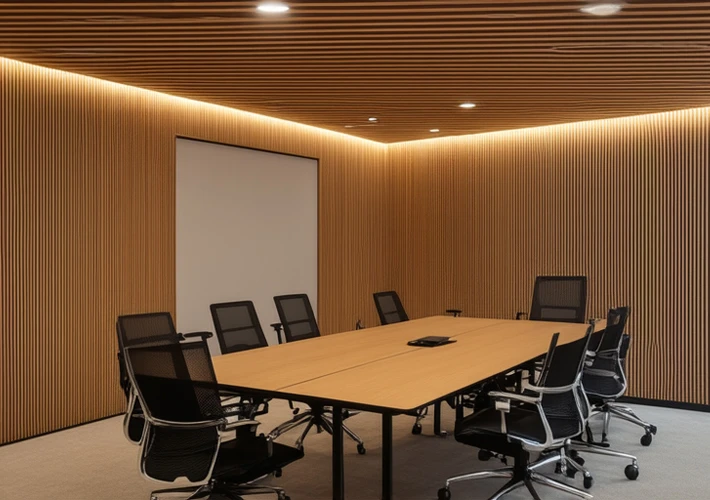
Applications of Wood Acoustic Wall Panels
5.1 Office Buildings
In modern open offices, noise control is critical to improving productivity. Wood acoustic panels reduce reverberation and create comfortable working environments. They are often installed in:
- Meeting rooms
- Open workspaces
- Reception areas
- Breakout zones
5.2 Hotels and Resorts
Luxury hotels seek both aesthetics and comfort. Wood acoustic panels provide:
- Quiet and elegant environments for guests
- High-end decorative finishes in lobbies, corridors, and rooms
- Customizable designs matching brand identity
5.3 Educational Institutions
Classrooms, libraries, and lecture halls benefit greatly from improved acoustics. Clear sound enhances learning outcomes and minimizes distractions.
5.4 Theaters and Cinemas
For entertainment venues, wood acoustic panels deliver optimal sound diffusion, reducing echo and enhancing clarity for speech, music, and film soundtracks.
5.5 Residential Interiors
Homeowners use these panels in:
- Living rooms and home theaters
- Music rooms
- Bedrooms
- They combine sound absorption with stylish décor appeal.
5.6 Restaurants and Cafés
Reducing noise in restaurants enhances customer satisfaction. Wood panels help create intimate dining experiences by minimizing chatter and kitchen sounds.
Comparison: Wood Acoustic Panels vs Other Acoustic Materials
| Feature | Wood Acoustic Panels | Fabric Panels | Foam Panels | Gypsum Board |
|---|---|---|---|---|
| Aesthetics | Natural, elegant wood texture | Soft look | Industrial appearance | Plain surface |
| Durability | High | Moderate | Low | High |
| NRC (Sound Absorption) | 0.75–0.95 | 0.6–0.8 | 0.7–0.9 | 0.3–0.5 |
| Fire Resistance | B1/B2 class | Moderate | Poor | Excellent |
| Environmental Performance | Recyclable, low VOC | Varies | Synthetic | Inorganic |
| Cost Efficiency | Moderate | Low | Low | Low |
| Maintenance | Easy | Moderate | Difficult | Easy |
| Design Flexibility | High (custom finishes) | Medium | Low | Low |
From this comparison, it’s clear that wood acoustic wall panels deliver the most balanced performance across aesthetics, durability, and acoustic efficiency.
How to Install Wood Acoustic Wall Panels
Proper installation ensures optimal acoustic results.
7.1 Preparation
- Check wall flatness and cleanliness.
- Mark the layout and alignment lines.
- Prepare mounting clips, furring channels, or wooden battens.
7.2 Installation Methods
Clip Installation:
Panels are fixed using metal clips on aluminum rails, allowing quick and even mounting.
Screw Fixing:
Panels are directly screwed onto wooden battens or framing structures.
Adhesive Installation:
For small or decorative walls, strong construction adhesives can be used for a seamless finish.
7.3 Acoustic Optimization
For enhanced performance, add acoustic cotton or mineral wool behind the panels. This combination achieves higher NRC values and improves soundproofing effects.
Maintenance and Care
Wood acoustic wall panels are designed for long-term use with minimal maintenance:
- Routine Cleaning: Use a soft dry cloth or vacuum to remove dust.
- Avoid Harsh Chemicals: Use mild detergents for stains.
- Prevent Moisture Exposure: Ensure good ventilation in humid environments.
- Inspect Fixings: Periodically check that panels remain secure.
With proper maintenance, panels can last for 15–25 years without significant performance degradation.
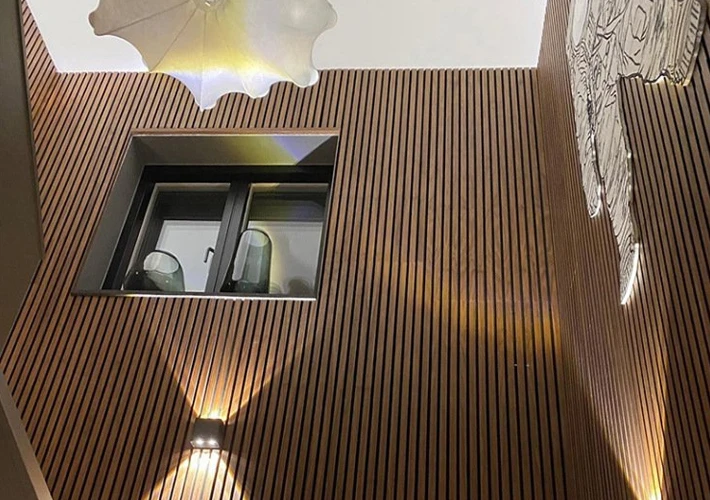
Market Trends and Future Development
The global acoustic materials market is growing rapidly due to rising awareness of indoor sound quality. According to industry data, the acoustic panel market is expected to exceed USD 18 billion by 2030, with wood-based panels holding the largest share in decorative applications.
Key trends include:
- Growing demand for eco-friendly acoustic materials
- Rising adoption in residential and hospitality sectors
- Increasing customization and modular design options
- Integration of LED lighting and smart technology in acoustic panels
As sustainability and comfort become top design priorities, wood acoustic panels are expected to remain a dominant product in interior architecture.
Why Choose a Chinese Manufacturer for Wood Acoustic Panels
As one of the largest global producers of decorative materials, China offers unmatched advantages in the manufacturing and export of wood acoustic wall panels.
10.1 Advanced Production Facilities
Chinese factories employ CNC precision equipment, automated cutting, and environmentally friendly coatings, ensuring high accuracy and consistent quality.
10.2 Competitive Pricing
With a mature supply chain and efficient mass production, Chinese manufacturers can offer cost-effective solutions without compromising performance or quality.
10.3 Customization and OEM Services
Factories provide full OEM/ODM support—including custom colors, patterns, packaging, and branding—to meet global client requirements.
10.4 International Standards Compliance
Most Chinese suppliers comply with ISO9001, CE, SGS, and FSC certifications, ensuring product reliability for international projects.
Conclusion
Wood acoustic wall panels are more than just decorative materials—they are intelligent sound management solutions that enhance interior comfort, aesthetics, and sustainability. Their combination of excellent acoustic performance, natural beauty, and design flexibility makes them the perfect choice for modern interior soundproofing projects.
Whether you’re designing a corporate office, hotel lobby, school auditorium, or residential home theater, wood acoustic panels deliver the ideal balance between form and function.
Partner with a Professional Wood Acoustic Panel Manufacturer
As a leading wood acoustic wall panel manufacturer and supplier in China, we provide:
- High-quality products made from eco-friendly materials
- Factory-direct prices and stable global supply
- Customization options for size, color, and pattern
- Comprehensive export services with fast delivery
If you’re a wholesaler, contractor, or interior design company, contact us today to discuss your project requirements. Our professional team will help you select the most suitable acoustic panel solution for your space.
📩 Get in touch with us to request free samples and quotations today!

